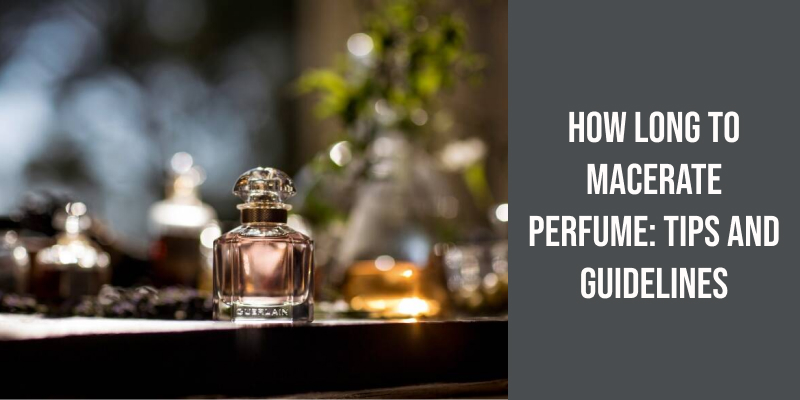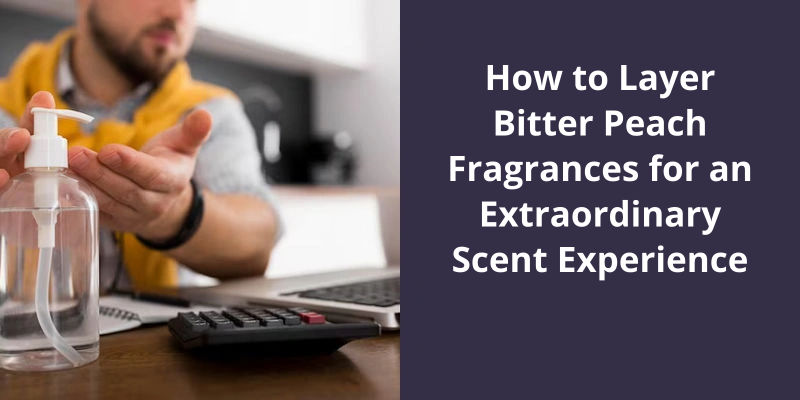Using a perfume blotter is a simple process. First, you spray your chosen perfume onto the blotter, ideally from a distance of about 5 inches to ensure the scent is evenly distributed. It is important to only apply the perfume on one side of the blotter. Then, wait for a few moments to let the alcohol in the perfume evaporate, and only then do you smell the blotter. Instead of directly sniffing it, you should wave it around gently near your nose, capturing the true essence of the fragrance. A blotter represents only the top notes of a perfume. If you wish to understand the full range of notes, you will need to apply the perfume on your skin, and wait for it to evolve through middle and base notes. Always remember, it is recommended to test one scent at a time to avoid confusing your nose.

What Is a Perfume Blotter?
Blotters are typically made of cardboard or paper and are long and narrow in shape. They’re designed to absorb and retain the fragrance of a perfume, allowing the scent to be effectively transferred to the nose of the person testing it. This makes them an invaluable tool for both professional perfumers and everyday consumers who want to evaluate a fragrance without committing to wearing it on their body.
In addition to being a useful tool for evaluating fragrances, blotting paper is also a popular tool for creating custom fragrances. Perfumers can use multiple blotters to create a unique scent profile, layering different fragrances on top of one another until they find the perfect combination. This is a common technique used in commercial perfumery, where unique fragrances are created by blending dozens (if not hundreds) of different scent molecules.
How to Properly Use a Perfume Blotter
A perfume blotter is a small piece of paper used to test fragrances. To properly use it, hold the blotter about an inch away from the fragrance and spray the scent onto the paper. Don’t touch the blotter to your skin or nose as this can alter the scent. Allow the scent to settle for a few moments before smelling the blotter to fully experience the fragrance. discard the blotter after use.
Aside from paper strips and blotters, have you ever wondered what other materials can be used to test perfumes? There are different factors to consider when selecting a material, such as absorbency and reactivity with the fragrance. In this article, we’ll explore the best materials to test perfume on and their unique properties.
What Is the Best Material to Test Perfume On?
One of the best materials to test perfume on is definitely paper strips or blotters. This is because they’re designed to be highly absorbent and porous, which allows the perfume to be absorbed quickly and effectively. This is important when testing perfumes, as you want to be able to get a good sense of the fragrance and how it smells on your skin. Paper strips and blotters are also very convenient, as they’re easy to carry around and use wherever you go.
Aside from paper blotters being a clean and simple tool for testing fragrances, they also allow for quick and easy comparisons between scents. However, some may wonder if paper is the only material that can be used for fragrance testing. In this article, we’ll explore whether or not paper is the only option and offer tips for using paper blotters effectively.
Can You Use Paper to Test Perfume?
They’re also practical and easy to use, making them a great tool for those who want to test many different scents. However, it’s worth noting that different types of paper can actually affect the way the fragrance smells. So while paper blotters are a great starting point, it’s important to keep this in mind when evaluating a fragrance.
What smells amazing on one person may not be as pleasant on another. This is especially important for individuals with sensitive skin or allergies.
There are also certain scents that are better suited to paper testing than others. For example, fragrances with a high alcohol content may not translate as well to paper, as the alcohol can evaporate quickly and leave behind a less accurate representation of the scent. On the other hand, heavier, more complex scents may be more accurately represented on paper, as they’ve more time to develop and evolve over time. Ultimately, the best way to determine if a fragrance is suited to testing on paper is to experiment and see how it reacts.
By testing multiple scents on different paper blotters, you can compare their respective notes and profiles more easily than you’d be able to on your skin. This can be particularly helpful when trying to narrow down your options and choose a fragrance that you truly love.
Ultimately, the best way to determine whether a fragrance is right for you is to wear it on your skin and observe how it interacts with your natural scent.
The Benefits and Drawbacks of Using Paper Versus Skin for Perfume Testing
- Paper is a convenient and cost-effective material for fragrance testing.
- It allows for easy application and quick evaluation of scents.
- Skin testing provides a more accurate representation of how a fragrance will smell on a person.
- It takes into account individual body chemistry and can offer a better understanding of a scent’s longevity and development over time.
- However, skin testing can be more time-consuming and require a larger investment in resources.
- Additionally, some people may have adverse reactions to fragrance ingredients when applied directly to the skin.
- In the end, the choice between paper and skin testing will depend on the specific needs and goals of the fragrance testing process.
Perfume is a personal and subjective experience that can differ from person to person. It’s scent can change depending on the wearer’s skin chemistry and environment. However, have you ever wondered if perfume smells different on paper than on skin? Read on to find out more.
Does Perfume Smell Different on Paper?
But why does this happen? It all comes down to body chemistry. Your skin has it’s own unique scent, which can be affected by factors such as diet, medication, and hormones. When you spray perfume on your skin, it interacts with your natural scent to create a new fragrance. This is why a perfume can smell different on everyone, even if it’s the same scent.
When you smell perfume on a paper blotter, youre not getting the full experience. The fragrance isn’t reacting with any natural oils or scents, so youre only getting a one-dimensional representation of the scent. This is why it’s important to always try perfume on your skin before buying it. You need to experience how the scent reacts with your own body chemistry for the most accurate representation of how it will smell on you.
When choosing a perfume, it’s also important to consider the season and occasion. Certain fragrances may be more appropriate for summer versus winter, or for a date night versus a work meeting. Experimenting with different scents can help you find the perfect perfume for every occasion and season.
Yes, it does. But the only way to truly experience a fragrance is to try it on your skin and see how it interacts with your unique body chemistry. Dont be afraid to experiment and try different scents until you find the perfect one for you. Remember, perfume is meant to enhance your natural beauty, not mask it.
Now that we know what tester blotter strips are, let’s dive into why they’re an essential tool for those in the fragrance industry.
What Is a Blotter Strip?
Air fresheners and deodorizers. Essential oils and aromatherapy blends.
Blotter strips are considered an essential tool for anyone working in the fragrance or aroma industry, as they allow you to experience the scent of a perfume or other scented product without actually applying it to your skin. This can be particularly important when working with a client who may have sensitive skin or allergies, as it allows you to find out if a particular scent is likely to cause a reaction.
Tester blotter strips are typically made from a special type of paper or card that’s specifically designed to absorb and hold fragrances and aromas. They’re generally around 2 to 3 inches in size, and can vary in shape depending on the specific use they’re being put to. For example, some tester blotter strips may be long and slender, while others may be round or square.
The process of using tester blotter strips is relatively simple. To test a fragrance or aroma, simply apply a small amount of the product to one end of the blotter strip. Hold the strip up to your nose, or wave it gently in front of your face, to allow the scent to circulate.
They allow you to test the scents of different products quickly and easily, without the need to apply them directly to the skin.
Conclusion
To get the best results, simply dip the blotter strips into the fragrance to the first line and then let them dry for approximately 10 seconds before smelling. Holding the blotter an inch from your nose provides an accurate evaluation of the fragrance. If you want to experiment with blending fragrances, using two strips is recommended.





